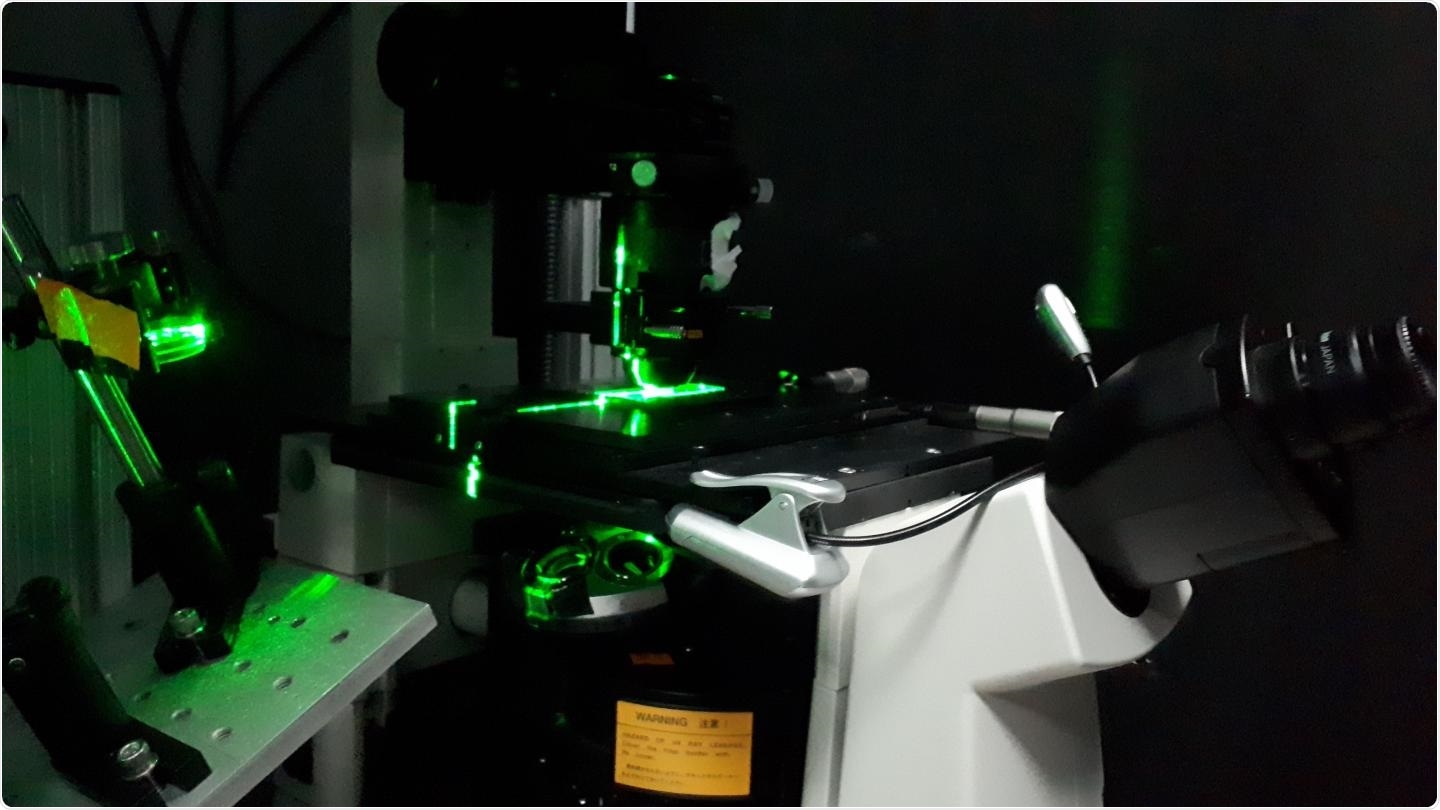Several diseases, including neurodegenerative disorders like Alzheimer’s, have been associated with the defective functioning of motor proteins involved in cell transport systems.

The researchers used high-resolution microscopy and laser optical tweezers to study motor proteins. Image Credit: George Shubeita.
Therefore, interpreting the complexities of how motor proteins function in their native crowded cell settings is crucial to figure out what precisely goes wrong when these proteins work inappropriately.
Molecular motors are essentially specialized proteins that adhere to a wide range of organelles, called cell cargo, and carry them along microtubule filaments—structural proteins generally are known as the highway of the cell.
Motor proteins usually operate in groups. They adhere to one cargo and inch together along the path of the filament in the cell.
George Shubeita, a lead researcher and Assistant Professor of Physics at NYU Abu Dhabi, and his research group demonstrated that in the case of a native cell environment, which is packed with a high level of macromolecules, the crowding considerably affects the speed of motor protein groups, but does not impact singular motor proteins.
While motor proteins have been separated from cells and examined in a laboratory setting, this is the first time that cargo transported by motor proteins have been analyzed in their native cell and also in an environment that mimics the crowded cellular setting.
The new study is titled “Macromolecular crowding serves as a physical regular of intracellular transport” and has been published in the Nature Physics journal.
Bovine serum albumin (a protein-concentrated serum) was applied to glass slides to replicate the crowded nature of cells. Besides this, microtubule filaments and the kinesin motor proteins were also used.
When the researchers used the laser light of optical tweezers to analyze the movement of single motors and also that of the groups of motors, they observed that in more crowded settings, motors may fall off the filament when opposed.
Consequently, a group of motors would be set back every time a singular motor falls from the guideway. Although groups of motors have been demonstrated to slow down in native cell settings, they are generally used to transport cargo across long distances and overcome the obstacles they encounter in a packed cell by sharing the load, which otherwise cannot be done by singular motors.
Our work highlights the balance that regulates the function of motors to achieve a robust transport system within the complex cell. Transporting cargoes to where they are needed within the living cell is important for its survival. Molecular motors act as nano-machines that achieve this task with utmost precision, despite the extremely crowded inner works of the cell.”
George Shubeita, Lead Researcher and Assistant Professor, Department of Physics, NYU Abu Dhabi
“By modeling the cell's environment, we have unraveled the details about the behavior of motors in the human body which is essential to understand what goes wrong when motors seize to behave properly in disease,” Shubeita concluded.
Source:
Journal reference:
Nettesheim, G., et al. (2020) Macromolecular crowding acts as a physical regulator of intracellular transport. Nature Physics. doi.org/10.1038/s41567-020-0957-y.